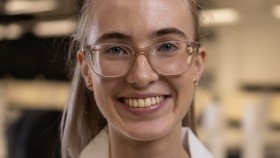The Wide-Field Spectroscopic telescope (WST): ESO’s next large telescope?
There is something particularly enjoyable about working on the inception of a new telescope project. This is when you explore its scientific potential before realities such as budget and technological restrictions start to poke some holes in your plan and reduce the scope of your project. This honeymoon phase is were we are in the development of the WST concept, a telescope that will do for spectroscopy what the Vera Rubin Observatory is going to do for imaging.
The scientific goals of the 10m class WST are ambitious, with simultaneous operation of a large field-of-view (5 sq. degree) and high multiplex (20,000) multi-object spectrograph facility with both medium and high-resolution modes (MOS), and a giant panoramic integral field spectrograph (IFS). WST will achieve transformative results in most areas of astrophysics: e.g. the nature and expansion of the dark Universe, the formation of first stars and galaxies and their role in the cosmic reionisation, the study of the dark and baryonic material in the cosmic web, the baryon cycle in galaxies, the formation history of the Milky Way and dwarf galaxies in the Local Group, characterization of exoplanet hosts, and the characterisation of transient phenomena.
This telescope is also a big deal for Australia as it could become a path toward ESO membership. The construction of VISTA was after all how the UK joined ESO and the European astronomical community is decidedly in support of ESO making WST its next flagship project (76% support according to a poll). For this reason, we are investing in the early design work of the telescope with AITC’s work focused specifically on the telescope structure. We recently contributed to the project’s optical design workshop that took place in Lyon at the end of March. We are now down to two optical designs that will be investigated in more detail, including consideration for the complexity and cost of the telescope’s structure.
So, to all that are interested in the project, whether it is for its science or its technical design, we will have a busy calendar this year. The first event is a science meeting aimed at developing the observatory’s science case. The meeting will take place between the 23rd and 26th of May in Vienna and Australian participation is highly anticipated. This meeting is important to constrain the telescope’s requirements and assure that we will deliver a telescope that fits your favourite science case.
The second meeting, which will also take place in Europe in October of this year, will be aimed at the technical team with the goal to set the conceptual design of the observatory. Our goal is to advance the design sufficiently to make a credible case to the different funding agencies both in Europe and Australia in 2024.
Finally, the observatory’s PI Roland Bacon will be touring Australia, spending a total of one month at the end of the year across some of Australia’s key astronomical institutions to broaden support for the project. Expect to hear more from me on that visit as we will plan a special workshop dedicated to WST during his visit at ANU.
Tony Travouillon
















